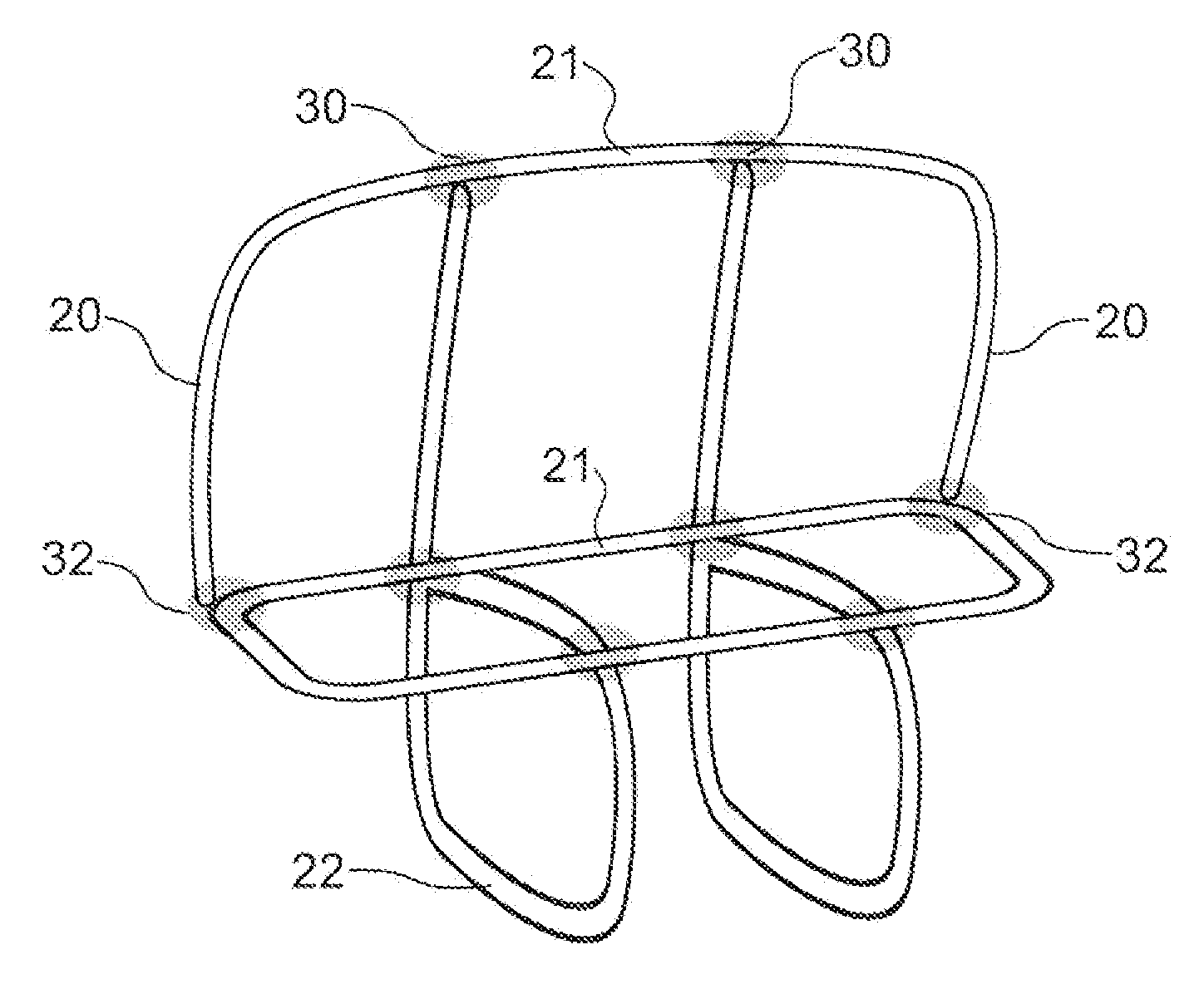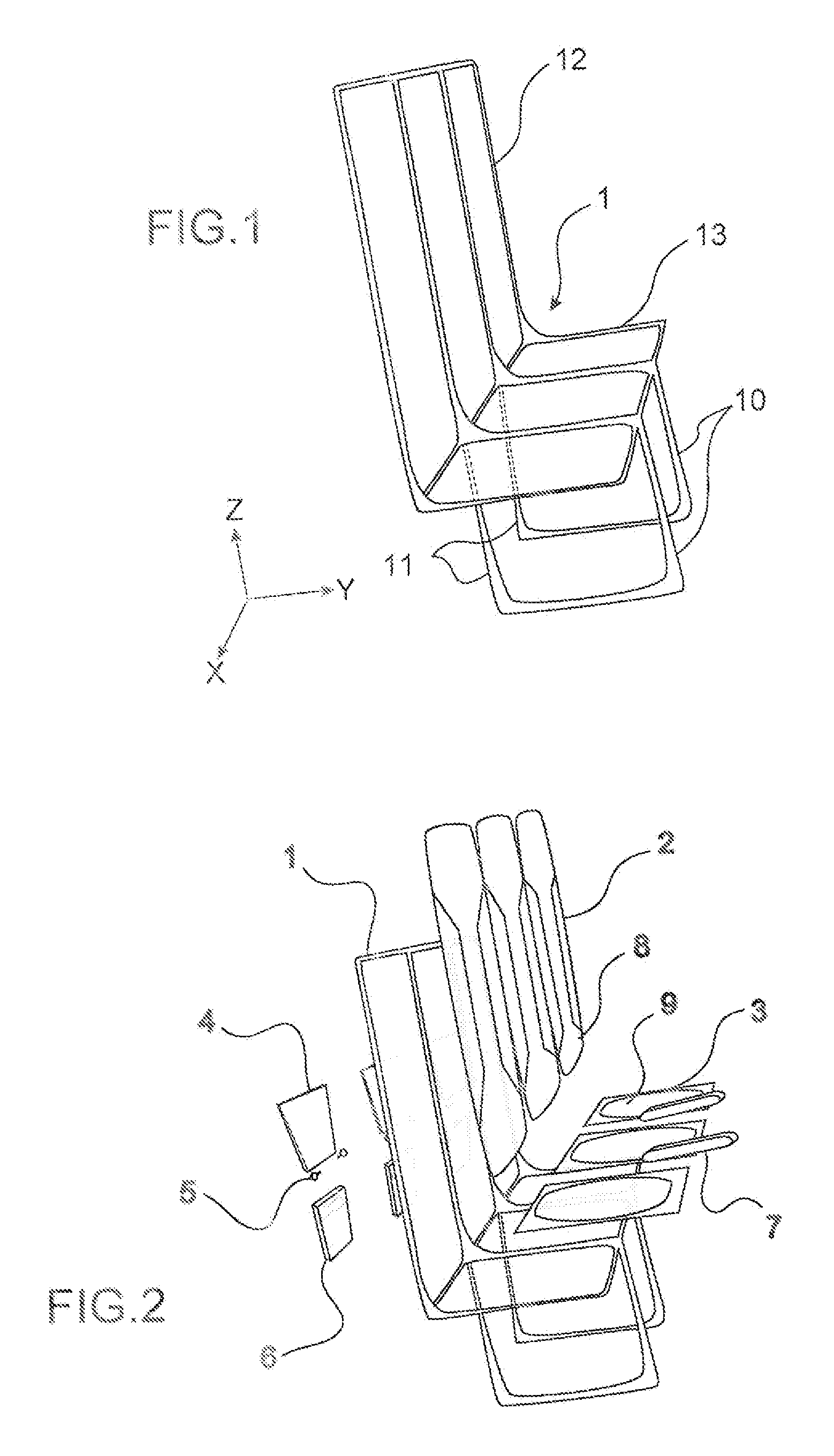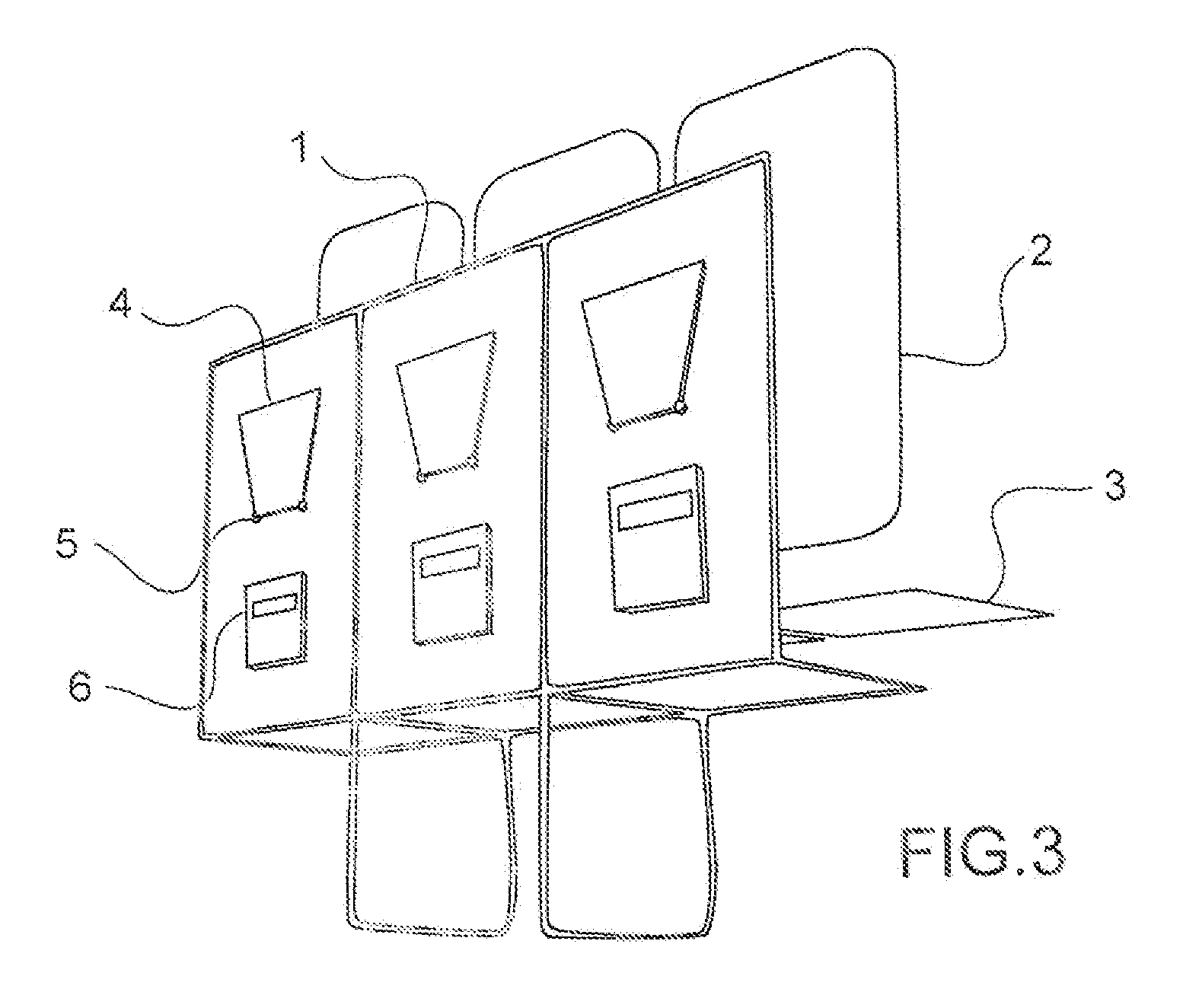Ultra lightweight seat for aircraft
a seat and aircraft technology, applied in the field of aircraft cabin fittings production, can solve the problems of heavy seats, inability to exploit commercially, dense metal structure, etc., and achieve the effect of softening material and strengthening seat structur
- Summary
- Abstract
- Description
- Claims
- Application Information
AI Technical Summary
Benefits of technology
Problems solved by technology
Method used
Image
Examples
Embodiment Construction
[0016]The present invention has been designed in the spirit of the problems mentioned above: simplification of the seat design, reduction of its weight and volume, and respect for the environment.
[0017]To this end, a first principal object of the invention is a seat for aircraft passengers including:[0018]a structure including feet attached to the floor of the aircraft, and an armature;[0019]at least one back, and[0020]at lease one base,
[0021]where the at least one back and the at least one base are both securely attached to the armature of the structure.
[0022]According to the invention, the structure is rigid, of tubular design, and made of plastic.
[0023]A preferential embodiment of the invention provides that the plastic of the structure is a polyetherimide resin.
[0024]In a preferential embodiment of the seat according to the invention, the structure is reinforced with fibres consisting of a material of the group including carbon, glass and plant fibres.
[0025]In a first design of ...
PUM
 Login to View More
Login to View More Abstract
Description
Claims
Application Information
 Login to View More
Login to View More - R&D
- Intellectual Property
- Life Sciences
- Materials
- Tech Scout
- Unparalleled Data Quality
- Higher Quality Content
- 60% Fewer Hallucinations
Browse by: Latest US Patents, China's latest patents, Technical Efficacy Thesaurus, Application Domain, Technology Topic, Popular Technical Reports.
© 2025 PatSnap. All rights reserved.Legal|Privacy policy|Modern Slavery Act Transparency Statement|Sitemap|About US| Contact US: help@patsnap.com



